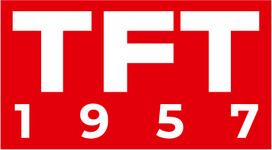-
Viz Pilot Edge 3.0 Unveiled
-
FOR-A to Debut IP Solutions
-
Blackmagic Design Unveils DeckLink 8K Pro MiniEncoder
Hosts: Philip Grossman, host and co-producer at Visionaries; Mary Ann Seidler, owner of First Light Media and consultant for multiCAM Systems and Telos Alliance.
Maria: Vizrt launches Viz Pilot Edge 3.0, boasting a revamped, user-friendly interface and enhanced functionality, ensuring up to 3x faster start-up times and smoother navigation. The update aims to streamline graphics creation and playout in newsrooms, offering improved usability, intelligent media search, and new control options, including centralized order management and Viz Arc control.
Philip, can you tell me more about this?
Philip: Certainly. Vizrt is a dominant force in the television news graphics sector, often likened to an “800-pound gorilla.” It’s commendable to see them updating their software. A leading company could easily become complacent, but they’re continuously evolving. This software update makes things simpler by incorporating HTML graphics and more software-defined elements. Overall, it’s enhancing an already great product, ensuring it stays ahead of or at least on par with competitors. They also have some exciting new products on the horizon.
Maria: How does it improve graphics creation in newsrooms?
Philip: The focus is on simplification. There’s a saying: “we’ve got to do more with less.” But eventually, you end up doing less with even less. This software aims to assist newsrooms that might have smaller teams. They might not have a dedicated graphics expert, so this allows them to either create graphics or use graphics made by a team member. It’s all about making the process more streamlined and straightforward.
Maria: Moving on, FOR-A is set to introduce its software-defined IP workflow and SMPTE ST 2110 standards at NAB New York, featuring the FA-1616 multi-channel processor and SOAR-A Edge IP transport appliance, ensuring enhanced hybrid production.
So Mary, unpack this for me.
Mary: Let’s delve into SMPTE 2110. I’m thrilled that FOR-A is adopting this. From their press release, they highlighted its scalability and support for multicast IP streaming in an uncompressed format. But the most significant advantage for users is its vendor neutrality. SMPTE 2110 ensures users aren’t tied to a single vendor. Philip, I’m aware of the audio industry’s sentiments. How do you perceive its acceptance in the video industry?
Philip: I’ve been deeply involved with 2110 and its predecessors, 2022-6 and 7, since their inception. I collaborated with John Mad, who edited the standards for 2110. SDI was revolutionary, marking the transition from analog to digital. SMPTE 2110 represents the next phase of this evolution. As more organizations integrate it into their products, it paves the way for decentralized or, as SMPTE once termed it, dematerialized environments. This means I don’t need a data center adjacent to my studio, restricted by the limitations of SDI cabling. Instead, I can use IP across vast distances, simplifying processes. It’s encouraging to see its growing adoption. Many of my clients, who haven’t yet embraced it, are showing keen interest. The FA 1616 product, for instance, provides a core IP routing infrastructure while still supporting SDI at the periphery for legacy systems. This is invaluable, especially considering some setups might still incorporate analog components. It’s all about facilitating this transition.
Maria: Moving on to Blackmagic, Blackmagic Design introduces the DeckLink 8K Pro Mini, a low-profile 8K digital cinema capture and playback card, featuring 4 independent 12G‑SDI Micro BNC connections, supporting various video standards and 12-bit RGB 4:4:4 video, and full Rec. 2020 color, ideal for high-resolution and high dynamic range workflows.
Maria: Philip, could you elaborate on this?
Philip: Certainly. While the DeckLink 8K Pro Mini is marketed as an 8K capture card, I believe its primary utility, at least for now, won’t be for 8K capture. That’s because there aren’t many devices outputting 8K in the format it supports. Instead, its strength lies in 8K output. I’ve been filming with Red cameras for nearly a decade, and my equipment includes both 8K and 6K cameras. This card allows me to connect to an 8K monitor for grading and editing, which is a significant advantage.
But what’s even more noteworthy are its four 12G connections. This means it can capture four UHD signals at once. I predict this feature will be the card’s main draw in the near future. Many of my clients are transitioning to 4K for live production. They want real-time capture without dedicating a computer to each camera. With this card, one computer can handle four cameras, streamlining the process.
360 Seconds. Broadcast News & Commentary
The weekly show, focusing on the latest products and solutions in the global TV and film industry, features insights and analysis from top experts. Released every Monday within the TKT1957 network, the program can be found on the YouTube channel, social media groups, and the tkt1957.com website. Engage with the content, view the episodes, and participate in the conversation by leaving your questions in the comments section.
Hosts: Philip Grossman, an independent advisor providing thought leadership and solutions architecture to leaders and organizations in the film and television industry; Mary Ann Seidler, owner of First Light Media and consultant for multiCAM Systems and Telos Alliance; and Maria Kholodova, TKT1957.com.
The live broadcast took place on october 16, 2023. Production – TKT1957 LLC.
Media Partner – Cine Gear Expo.
The program can be watched every Monday at 19:00 UTC+4 by clicking on any of these links:









